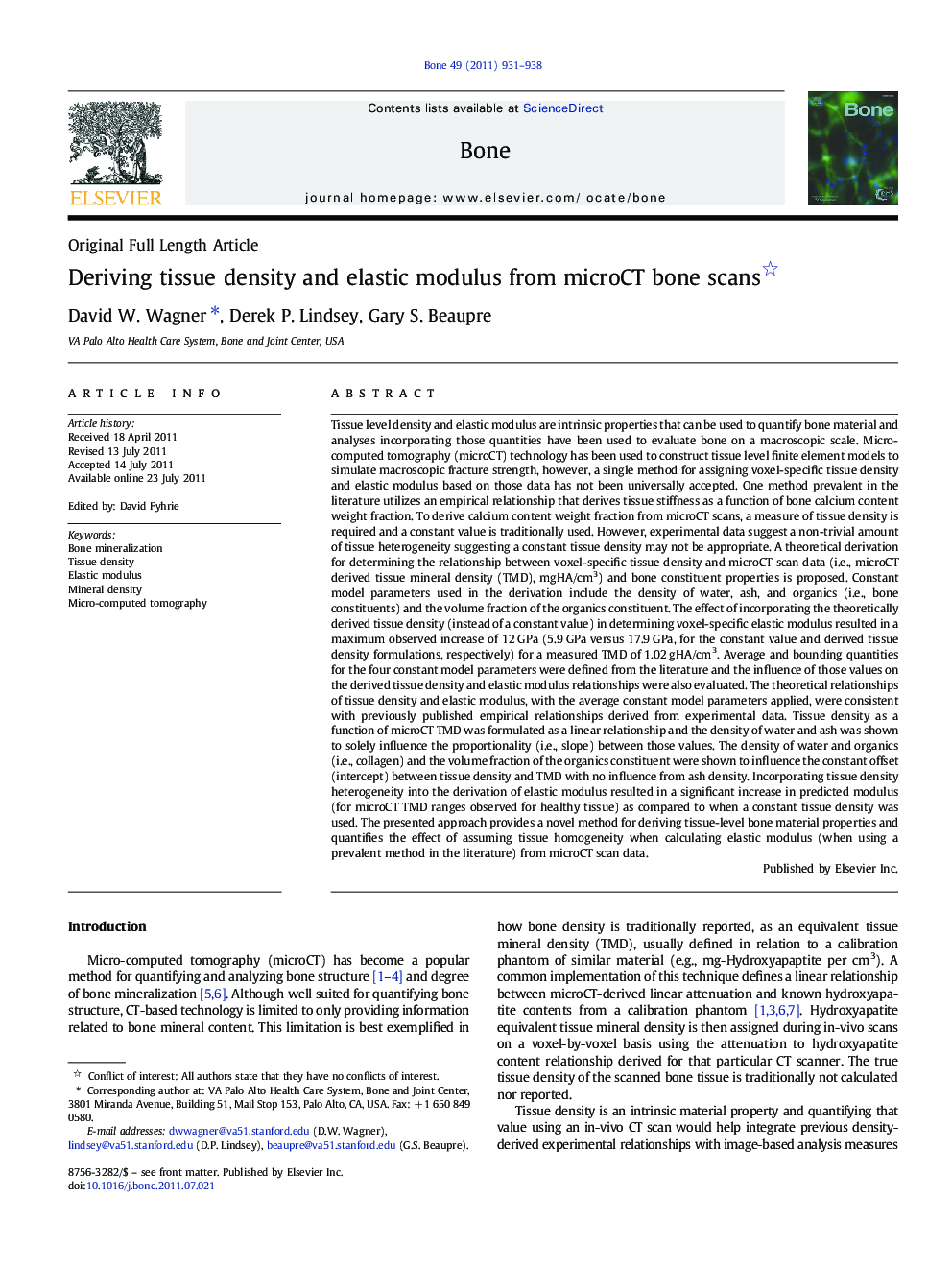| کد مقاله | کد نشریه | سال انتشار | مقاله انگلیسی | نسخه تمام متن |
|---|---|---|---|---|
| 2779935 | 1153287 | 2011 | 8 صفحه PDF | دانلود رایگان |

Tissue level density and elastic modulus are intrinsic properties that can be used to quantify bone material and analyses incorporating those quantities have been used to evaluate bone on a macroscopic scale. Micro-computed tomography (microCT) technology has been used to construct tissue level finite element models to simulate macroscopic fracture strength, however, a single method for assigning voxel-specific tissue density and elastic modulus based on those data has not been universally accepted. One method prevalent in the literature utilizes an empirical relationship that derives tissue stiffness as a function of bone calcium content weight fraction. To derive calcium content weight fraction from microCT scans, a measure of tissue density is required and a constant value is traditionally used. However, experimental data suggest a non-trivial amount of tissue heterogeneity suggesting a constant tissue density may not be appropriate. A theoretical derivation for determining the relationship between voxel-specific tissue density and microCT scan data (i.e., microCT derived tissue mineral density (TMD), mgHA/cm3) and bone constituent properties is proposed. Constant model parameters used in the derivation include the density of water, ash, and organics (i.e., bone constituents) and the volume fraction of the organics constituent. The effect of incorporating the theoretically derived tissue density (instead of a constant value) in determining voxel-specific elastic modulus resulted in a maximum observed increase of 12 GPa (5.9 GPa versus 17.9 GPa, for the constant value and derived tissue density formulations, respectively) for a measured TMD of 1.02 gHA/cm3. Average and bounding quantities for the four constant model parameters were defined from the literature and the influence of those values on the derived tissue density and elastic modulus relationships were also evaluated. The theoretical relationships of tissue density and elastic modulus, with the average constant model parameters applied, were consistent with previously published empirical relationships derived from experimental data. Tissue density as a function of microCT TMD was formulated as a linear relationship and the density of water and ash was shown to solely influence the proportionality (i.e., slope) between those values. The density of water and organics (i.e., collagen) and the volume fraction of the organics constituent were shown to influence the constant offset (intercept) between tissue density and TMD with no influence from ash density. Incorporating tissue density heterogeneity into the derivation of elastic modulus resulted in a significant increase in predicted modulus (for microCT TMD ranges observed for healthy tissue) as compared to when a constant tissue density was used. The presented approach provides a novel method for deriving tissue-level bone material properties and quantifies the effect of assuming tissue homogeneity when calculating elastic modulus (when using a prevalent method in the literature) from microCT scan data.
► We develop a method for deriving bone tissue density from microCT scan data.
► We use that method to derive voxel-specific elastic modulus from microCT data.
► We examine the effects and sensitivity of model assumptions on derived values.
► Tissue density varied less than 7% of the baseline model presented.
► The theoretical relationships were consistent with published experimental data.
Journal: Bone - Volume 49, Issue 5, November 2011, Pages 931–938